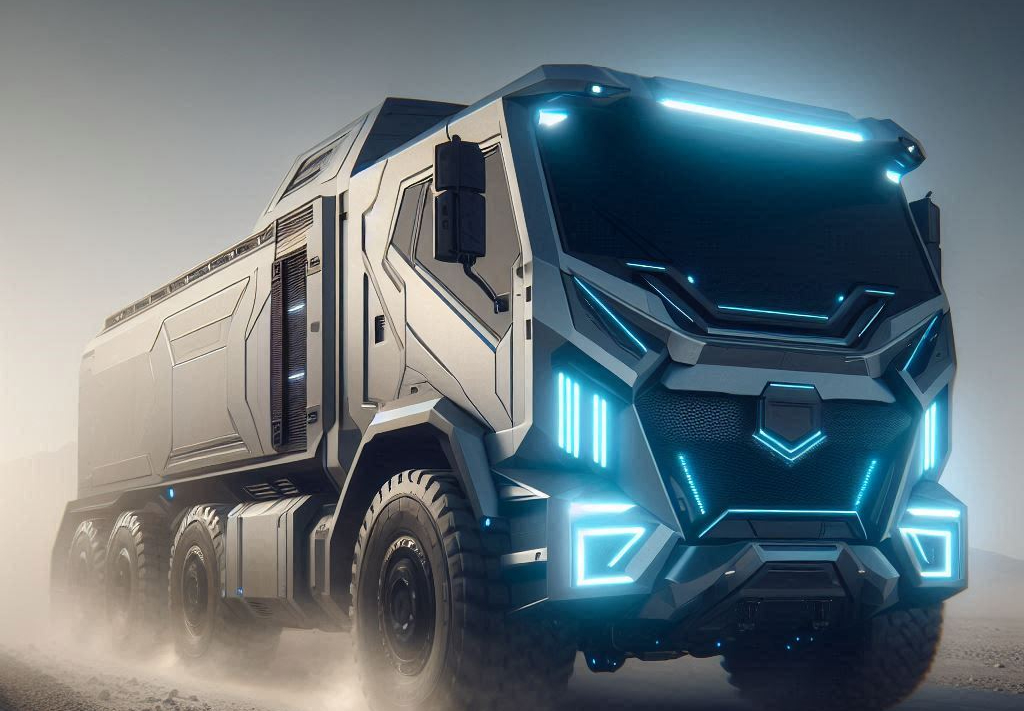The Global Military Vehicle Electrification Market is experiencing significant transformation, driven by the need for enhanced operational efficiency, reduced reliance on fossil fuels, and the push towards sustainability. Military forces worldwide are investing in the electrification of their vehicle fleets, ranging from light tactical vehicles to heavy armored tanks, to address both strategic and environmental challenges.
Industry Trends
- Technological Advancements: The integration of advanced technologies like AI, IoT, and autonomous systems is becoming commonplace. Electrified vehicles equipped with sophisticated sensors and communication systems enhance battlefield awareness and operational capabilities.
- Hybrid and Fully Electric Vehicles: The development and deployment of hybrid and fully electric military vehicles are on the rise. Hybrid systems offer a balanced approach, combining traditional internal combustion engines with electric power, whereas fully electric vehicles promise zero emissions and quieter operations.
- Energy Storage Solutions: Advances in battery technology, such as solid-state batteries and lithium-ion variants, are critical for improving the range and efficiency of electric military vehicles. Enhanced energy storage solutions ensure longer mission durations and faster recharge times.
- Infrastructure Development: The establishment of robust charging infrastructure and mobile charging units is essential for the widespread adoption of electric military vehicles. Military bases are investing in renewable energy sources to power these infrastructures sustainably.
Download Sample PDF Copy to Understand More: https://www.marketsandmarkets.com/pdfdownloadNew.asp?id=55451533
Opportunities
- Sustainability Goals: Nations are increasingly focused on reducing their carbon footprints. Electrification of military vehicles aligns with these sustainability goals, providing opportunities for companies specializing in green technologies.
- Operational Efficiency: Electric vehicles offer lower operational and maintenance costs compared to traditional vehicles. This presents a significant opportunity for defense budgets to be optimized towards other critical areas.
- Strategic Advantages: Electric military vehicles provide tactical advantages such as reduced thermal and noise signatures, making them less detectable by enemy forces. This creates opportunities for manufacturers to innovate in stealth technology.
- Government Funding and Incentives: Increased government funding and incentives for research and development in military vehicle electrification provide a fertile ground for innovation and growth.

Market Dynamics
- Demand Drivers: The growing need for energy-efficient and environmentally friendly military solutions, coupled with advancements in electric vehicle technology, is driving demand.
- Challenges: High initial costs, limited range, and the need for extensive charging infrastructure pose challenges. Additionally, the reliability of electric vehicles in extreme combat conditions remains a critical concern.
- Regulatory Landscape: Governments are enacting policies and regulations to promote the adoption of electric vehicles, including military applications. Compliance with these regulations is essential for market players.
- Economic Factors: Fluctuations in the global economy and defense budgets impact the pace of electrification. Economic stability fosters growth, while downturns can slow adoption rates.
Ask for Sample Report: https://www.marketsandmarkets.com/requestsampleNew.asp?id=55451533
Partnerships
- Collaborations with Technology Firms: Defense contractors are partnering with tech companies to integrate advanced electronics and software into military vehicles. These partnerships accelerate innovation and development.
- Joint Ventures: Joint ventures between automotive manufacturers and defense firms are becoming common. These collaborations leverage each party’s strengths to develop cutting-edge electric military vehicles.
- Academic and Research Institutions: Partnerships with universities and research institutions facilitate the advancement of new technologies and the training of a skilled workforce for the future.
- International Alliances: Cross-border collaborations and alliances help in sharing knowledge, resources, and best practices, enhancing the overall capabilities of electric military vehicles globally.
Key Companies
- BAE Systems: A leading defense contractor involved in developing hybrid electric drive systems for military applications, offering solutions that improve fuel efficiency and reduce emissions.
- General Dynamics: Known for its innovative approach to electric and hybrid military vehicles, General Dynamics is at the forefront of integrating advanced technologies into their product lines.
- Lockheed Martin: Engages in the development of cutting-edge electrification solutions for various military vehicles, focusing on enhancing operational capabilities and sustainability.
- Northrop Grumman: Invests in research and development of electric propulsion systems and advanced energy storage solutions to support the electrification of military vehicles.
- Oshkosh Defense: Specializes in manufacturing tactical military vehicles with hybrid and electric propulsion systems, aiming to provide reliable and efficient solutions for the military.
The electrification of military vehicles is set to revolutionize defense operations globally. With advancements in technology, growing environmental concerns, and increased government support, the market is poised for substantial growth. Key players, strategic partnerships, and a focus on innovation will drive the industry forward, addressing both the challenges and opportunities presented by this transformative shift.
